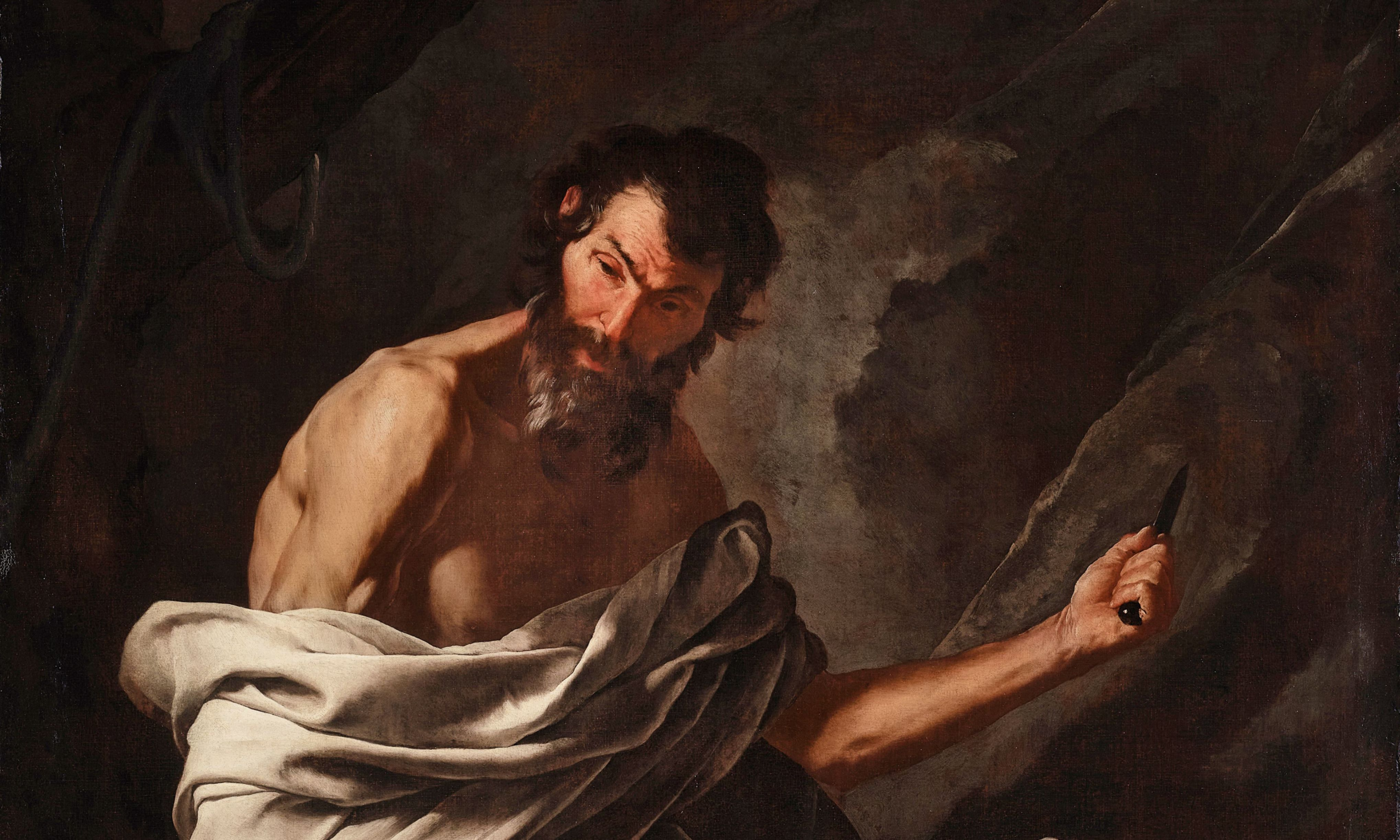Bernardo Cavallino’s Saint Bartholomew (around 1640-45) Courtesy of the National Gallery, London
London’s National Gallery was the buyer of Bernardo Cavallino’s Saint Bartholomew (around 1640-45) at Sotheby’s, New York on 27 January in the sale of the Fisch Davidson collection. We can report that it was acquired with funds from the American Friends of the National Gallery.
The Cavallino’s hammer price was $3.2m ($3,922,000 with buyer’s premium), towards the top end of the $2.5m-$3.5m estimate. This is a record auction price for the artist.
Saint Bartholomew had earlier emerged as a “sleeper”. In 1988 it was first published and illustrated, also at Sotheby’s, when it was wrongly recorded as “Spanish School” and offered at the auction house’s Amsterdam saleroom, estimated at 25,000-30,000 Dutch guilders. At least two bidders recognised its potential as an important Italian painting, and it soared to 535,000 guilders (then equivalent to around $280,000).
The buyer was the Colnaghi gallery, based in London and New York, which researched the painting. Two years later it attributed the picture to Cavallino, who died in Naples in around 1656. Saint Bartholomew was exhibited as a Cavallino by New York’s Metropolitan Museum of Art in 1999 and accepted by the Neapolitan specialist Nicola Spinosa.
Colnaghi then sold Saint Bartholomew to Mauro Herlitzka, a New York-based Argentinian collector. In 1997 it was bought for the collection of the property developer Mark Fisch and the former judge Rachel Davidson, who are now divorcing. This led to the 27 January sale.
Cavallino has depicted a slightly larger than life-size figure of Saint Bartholomew, who is traditionally believed to have been flayed alive and then beheaded while on a missionary trip to Armenia in the first century AD. The lighting is dramatic, illuminating the seated saint in darkened surroundings.
Francesca Whitlum-Cooper, the National Gallery curator who spearheaded the acquisition, stresses that it is not a violent depiction of the flaying, but is more subtle. The saint grasps a large knife, holding it away from his body and looking in the other direction. But he is only too aware of his impending painful martyrdom. Whitlum-Cooper says: “He can’t put the knife down—or look at it. Cavallino has provided a threat of violence, which is very powerful.”
There is one other Cavallino at the National Gallery, Christ Driving the Traders from the Temple (1645-50), along with five others in UK public collections: Compton Verney (Warwick), the Walker Art Gallery (Liverpool), York Art Gallery and two at Birmingham’s Barber Institute of Fine Arts.
Saint Bartholomew will be brought to London very shortly and will go on display at the National Gallery in the next weeks.
Powerful Old Master painting of Saint Bartholomew bought by London’s National Gallery for almost $4m

